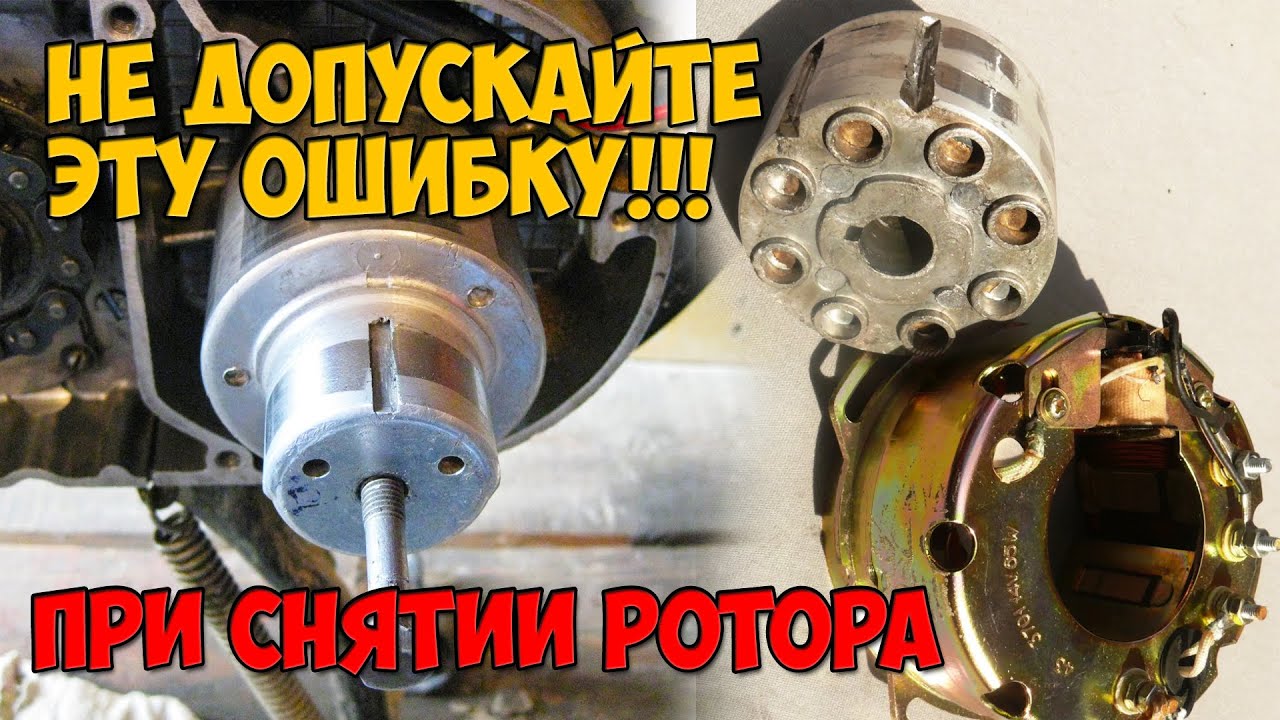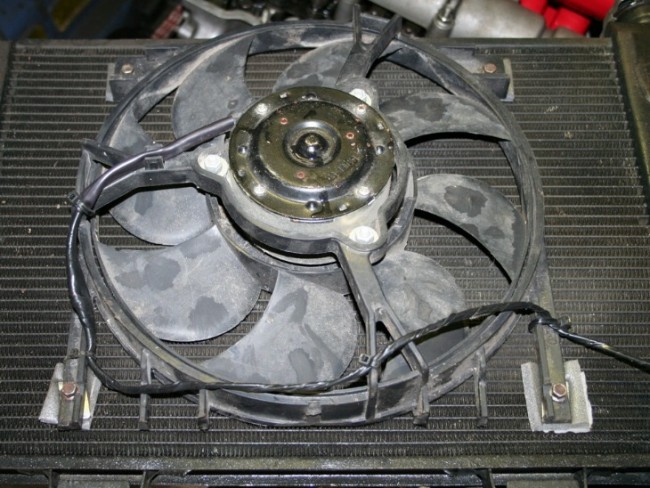
How to install new rotors
The brake disc is one of the key components that help stop a car. The brake pads compress along with the rotor, which rotates with the wheel, creating friction and stopping the wheel from spinning. With time,…
The brake disc is one of the key components that help stop a car. The brake pads compress along with the rotor, which rotates with the wheel, creating friction and stopping the wheel from spinning.
Over time, the metal rotor wears out and becomes thinner. When this happens, the rotor heats up faster, which increases the chance of rotor warping and pedal pulsation when the brake is applied. It's important that your rotors are replaced when they get too thin or else you'll compromise your car's ability to slow down.
You should also replace your rotors if there are any overheating spots, usually blue in color. When the metal is overheated, it hardens and becomes harder than the rest of the rotor metal. This place doesn't wear out as quickly, and soon your rotor will have a bulge that will rub against your pads, making a grinding sound when you try to stop.
Part 1 of 2: Removing the Old Rotor
Necessary materials
- Brake cleaner
- Brake piston compressor
- Elastic cord
- Jack
- Jack stands
- ratchet
- Socket set
- thread blocker
Wrench
Attention: You will need sockets in several sizes, which vary depending on the type of car. The caliper slide pin bolts and mounting bolts are about 14mm or ⅝ inch. The most common clamp nut sizes are 19 or 20 mm for metric or ¾” and 13/16” for older domestic vehicles.
Step 1: Raise the vehicle off the ground. On a firm, level surface, use a jack and raise the vehicle so that the wheel you are working on is off the ground.
Block any wheels that are still on the ground so that the machine does not move while you are working.
- Functions: If you are using a breaker, be sure to loosen the lug nuts before lifting the vehicle. Otherwise, you will just turn the steering wheel, trying to loosen them in the air.
Step 2: remove the wheel. This will open the caliper and rotor so you can work.
- Functions: Watch your nuts! Put them in a tray so they can't roll away from you. If your car has hubcaps, you can turn them over and use them as a tray.
Step 3: Remove the Top Slider Pin Bolt. This will allow you to open the caliper to remove the brake pads.
If you don't remove them now, they will likely fall out when you remove the entire caliper assembly.
Step 4: Rotate the caliper body and remove the brake pads.. Like a clam shell, the body will be able to pivot upward and open, allowing the pads to be removed later.
- Functions: Use a flathead screwdriver or small pry bar to open the caliper if there is resistance.
Step 5: Close the caliper. With the pads removed, close the caliper and hand-tighten the slider bolt to hold the parts together.
Step 6: Remove one of the caliper mounting bracket bolts.. They will be closer to the center of the wheel on the back side of the wheel hub. Unscrew one of them and set aside.
- Functions: The manufacturer usually uses a threadlocker on these bolts to prevent them from coming loose. Use a broken bar to help undo them.
Step 7: Get a firm grip on the caliper. Before removing the second bolt, make sure you have a hand supporting the weight of the caliper as it will fall.
Calipers tend to be heavy so be prepared for the weight. If it were to fall, the weight of the caliper pulling on the brake lines could do significant damage.
- Functions: Get as close as possible while supporting the caliper. The farther you are, the harder it will be to support the weight of the caliper.
Step 8: Remove the second caliper mounting bracket bolt.. While supporting the caliper with one hand, unscrew the bolt with the other hand and remove the caliper.
Step 9: Tie the caliper down so it doesn't dangle. As mentioned earlier, you don't want the weight of the caliper pulling on the brake lines. Find a strong part of the pendant and tie the caliper to it with an elastic cord. Wrap the cord a few times to make sure it doesn't fall off.
- Functions: If you do not have an elastic cable or rope, you can install a caliper on a strong box. Make sure there is some slack in the lines to avoid excessive tension.
Step 10: Remove the old rotor. There are several different ways to mount the rotors, so this step depends on the make and model of the vehicle.
Most brake discs should just slide off the wheel studs, or they may have screws that need to be removed.
There are types of vehicles that require disassembly of the wheel bearing assembly. It also depends on the model, so be sure to find the right way to do it. You may need to use a new cotter pin and stuff the bearing with a little grease, so make sure you have these items with you if necessary.
- Functions: Moisture may get behind the rotor and cause rust between the rotor and wheel assembly. If the rotor does not come off easily, place a block of wood on top of the rotor and tap with a hammer. This will remove the rust and the rotor should come off. If this is the case, you should clean off the rust that is still on the wheel assembly so it doesn't happen again with your new rotor.
Part 2 of 2: Installing New Rotors
Step 1: Clean new rotors of shipping grease.. Rotor manufacturers typically apply a thin coat of lubricant to rotors prior to shipment to prevent rust formation.
This layer must be cleaned before installing the rotors on the vehicle. Spray the rotor with brake cleaner and wipe it with a clean rag. Be sure to spray on both sides.
Step 2: Install the new rotor. If you had to disassemble the wheel bearing, make sure you reassemble it correctly and fill it with grease.
Step 3: Clean the Mounting Bolts. Before reinserting the bolts, clean them and apply new threadlocker.
Spray the bolts with brake cleaner and thoroughly clean the threads with a wire brush. Make sure they are completely dry before applying threadlocker.
- Attention: Only use thread lock if it has been used before.
Step 4: open the caliper again. As before, remove the slider top bolt and rotate the caliper.
Step 5: Squeeze the Brake Pistons. As the pads and rotors wear, the piston inside the caliper begins to slowly slide out of the housing. You need to push the piston back inside the body to get the caliper to sit on the new components.
Rotate the top of the master cylinder under the hood to depressurize the brake lines a little. This will make it easier to compress the pistons. Leave the lid on top of the tank to keep dust out.
Do not press directly on the piston, as this may scratch it. Place a piece of wood between the clamp and piston to spread the pressure across the entire piston. If you are replacing brake pads, you can use the old ones for this. Do not use the gaskets that you are going to install on the car - pressure can damage them.
The caliper piston should be flush with the body.
FunctionsA: If the caliper has multiple pistons, compressing each one individually will make your life easier. If you don't have access to a brake compressor, a C-clip can be used instead.
Step 6: Install the brake pads. It is highly recommended to purchase new brake pads if you are replacing rotors.
Notches and grooves from the old disc can be transferred to the brake pads, which will then be transferred to your new discs if the pads are reused. You want a smooth surface, so using new parts will help prolong rotor life.
Step 7: Close the caliper over the new rotor and pads.. With the pistons compressed, the caliper should just slide.
If there is resistance, most likely the piston needs to be compressed a little more. Tighten the slider pin bolt to the correct torque.
- Attention: Torque specifications can be found on the Internet or in the car repair manual.
Step 8: Reinstall the wheel. Tighten the clamp nuts in the correct order and to the correct torque.
- Attention: Clamp nut tightening specifications can be found online or in your vehicle repair manual.
Step 9: Lower the car and check the brake fluid.. Tighten the top of the master cylinder if you haven't already.
Step 10. Repeat steps 1 through 9 for each replacement rotor.. When you are done replacing the rotors, you will need to test drive the vehicle.
Step 11: Test Drive Your Vehicle. Use an empty parking lot or similar low-risk area to test your brakes first.
Before attempting to brake at road speed, take your foot off the accelerator and attempt to stop the vehicle. Listen for any unusual sounds. If everything is in order, you can check them out by going out to an empty alley.
With new rotors and hopefully new brake pads, you can be sure your car will be able to stop. Do-it-yourself work from home will always save you money, especially for jobs where you don't need expensive special tools. If you have problems replacing rotors, our certified AvtoTachki specialists will help you to replace them.
